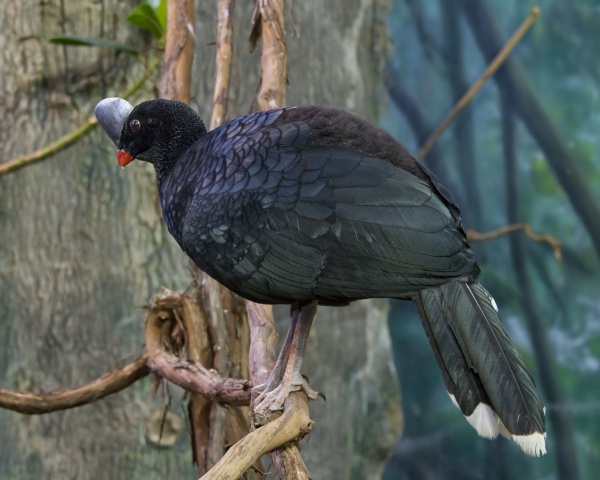Facts About Helmeted curassow
The helmeted curassow, or northern helmeted curassow, is a striking bird belonging to the Cracidae family. These large, terrestrial birds thrive in the subtropical cloud forests of the steep, mountainous regions of western Venezuela and northern Colombia. There are two subspecies, each inhabiting distinct mountain ranges.
Recognizable by their predominantly black plumage, helmeted curassows feature unique characteristics such as a white-tipped tail, a red bill, and a grey casque on their foreheads. Males are generally larger than females, although both subspecies exhibit similar appearances.
Regrettably, the helmeted curassow is facing significant challenges, with its population declining to the point where the International Union for Conservation of Nature (IUCN) has classified it as "Endangered." These birds have a diet that includes seeds, fruits, insects, and small animals. During breeding season, the female lays two cream-colored eggs and incubates them for approximately 30 days.
Their habitat encompasses the eastern Andes of Venezuela and Colombia. The helmeted curassow is also listed on Appendix II of the Convention on International Trade in Endangered Species (CITES), indicating that while they are not immediately threatened with extinction, they could become endangered without strict regulation.
Originally classified as "Vulnerable" recent studies have revealed a rapid population decline, leading to their status being upgraded to "Endangered" in 2008. The bird's taxonomy includes two subspecies: the Mérida helmeted curassow and the Perijá helmeted curassow. Their evolutionary history dates back to the Late Miocene period, around 8-7 million years ago, with genetic divergence between the subspecies occurring approximately 6 million years ago.

 Venezuela
Venezuela